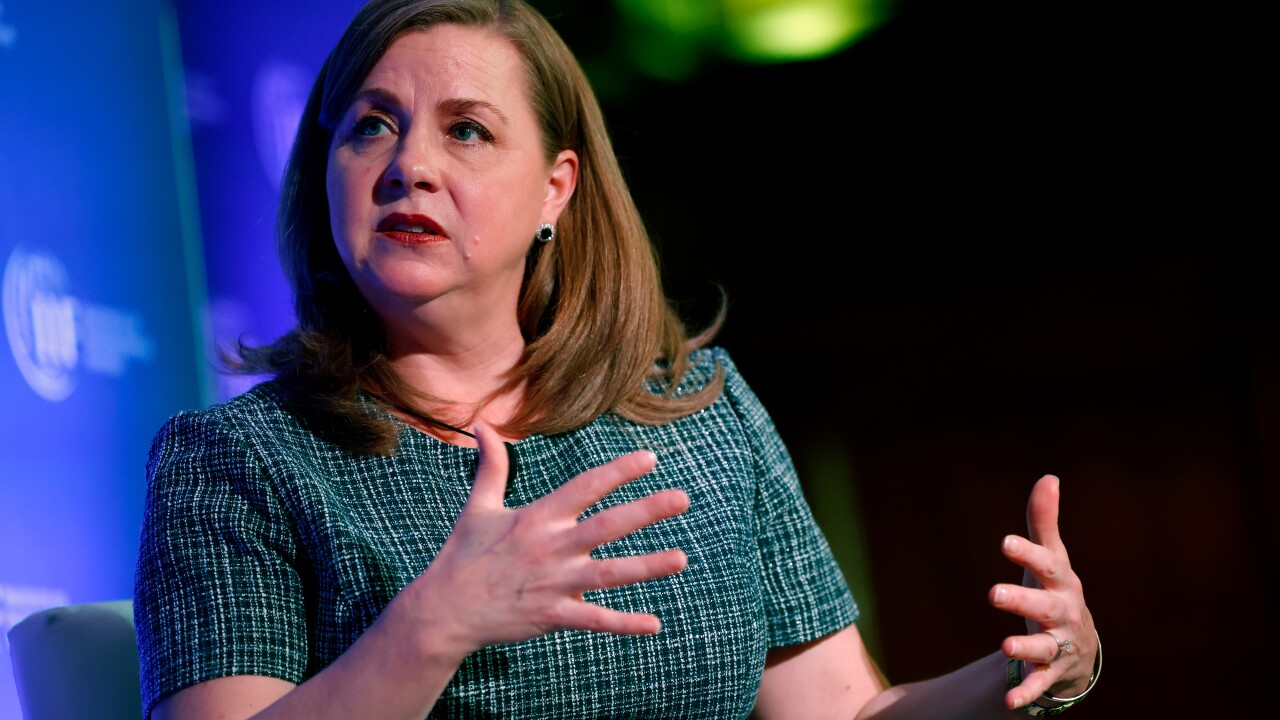European Union regulators are socializing the idea of yet another intervention in the payments market.
Valdis Dombrovskis, the European Commission's vice president for the euro and social dialogue, declared on Feb. 26 that the EC was “reflecting on whether a stronger regulatory push would be needed to speed up” use of the European Central Bank’s instant-payments system to “disrupt existing payment solutions — including cards.”
It was a rhetorical reflection. The answer will be more direction from on high, and “more Europe.”
In November, the ECB

ECB board member Yves Mersch at the American Community Association in Brussels urged promoting the central bank’s instant-payments system and establishing interoperability between legacy national payment systems, perhaps harnessing TIPS, thus creating a euro-champion to compete with the dominant Pan-EU networks Mastercard and Visa.
Previously, the EC and ECB cheered two putative Western EU payment networks, the Euro Alliance of Payment Schemes (EAPS) and Monnet. Both failed.
Mersch worries that “a true SEPA for cards has not yet been achieved” and suggests interoperability between surviving national schemes and adoption of “a common European logo.”
EAPS attempted to build a Pan-Western European payment scheme relying on interoperability between national systems. It never solved a real problem for consumers, merchants or banks, just as Mersch’s idea for a European system would not. EAPS didn’t invest in building a brand or compelling value proposition or have a plausible fighting strategy to achieve network critical mass.
Monnet was a coalition of 24 Western European banks with the market heft to have a go at it. However, it balked at investing in billions of euros in a political project to demonstrate they were "good Europeans" by building an inferior network to compete with Mastercard and Visa. Finding a path to retail-payment network critical mass is difficult, especially in mature, well-served markets. EU payment-system price controls make it even less appealing.
Worldline launched a Pan-European system facilitating interoperability between national mobile P2P payments systems. Mobile P2P payment systems such as Swish in Sweden, Mobilepay in Denmark and Jiffy in Italy have nascent retail-payments beachheads. For interoperability to work, there has to be a unifying brand conveying the promise. Lack of a unifying brand on cards and signage at the point of sale on and offline, has been a critical factor impeding more transactions over Discover’s global network of network reciprocity.
At the Merchant Payment Ecosystem conference in Berlin on Feb. 20, Helmut Wacket, who heads the ECB’s market innovation and integration division, extolled TIPS for bringing instant payments to retail.
TIPS has Pan-European reach delivering real-time interbank euro payments within 10 seconds at 0.2 eurocents per transaction. Transaction economics are thin gruel. Private interbank payment networks such as Mastercard (Vocalink), STET, Nets, Worldline and Swift can, and will have to, deliver additional features to compete across the EU.
In addition to conducting monetary policy and regulating banks, that the EU’s central bank should try to “drive innovation” in payments.
More retail and interbank payments competition in the European Union and “less Europe,” would be good for European consumers, merchants and banks. China’s watershed reformer Deng Xiaoping said it doesn’t matter if a cat is black or white so long as it catches mice. EU policymakers should worry less about participants’ nationalities and directing the payments market, and more about creating an environment conducive to and inviting for new entrants that catch mice, provide fierce competition and foster innovation.





